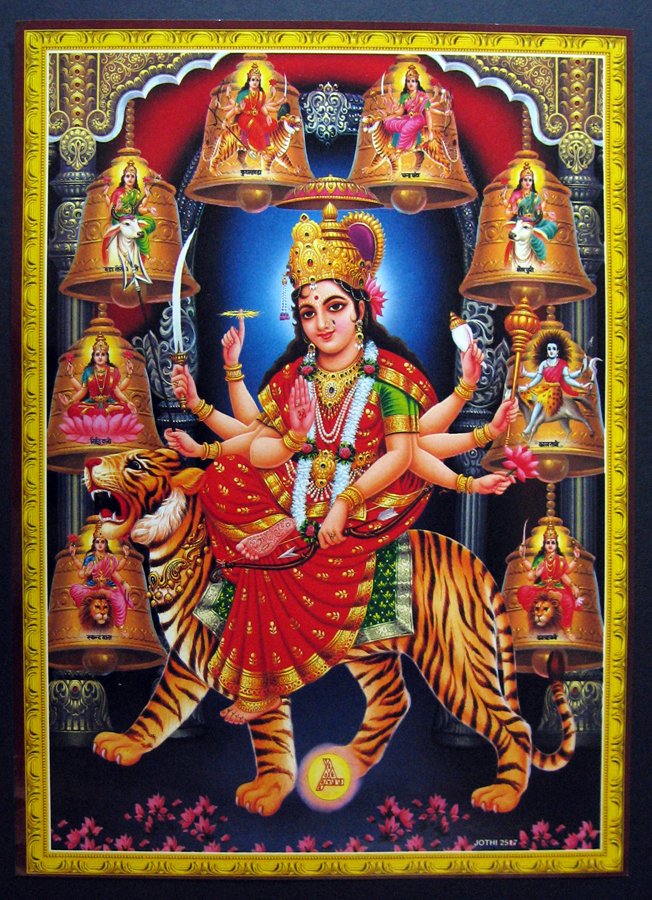Navratri Means Nine Nights in Sanskrit

Navratri (Sanskrit:नवरात्रि) is a Hindu festival of worship and dance. It is the largest festival of Nepal.
The word Navaratri literally means nine nights in Sanskrit; Nava - Nine and Ratri - nights. During these nine days and nights, nine forms of Shakti i.e. female divinity are worshipped.
Forms of Shakti
The following 9 forms of goddesses are worshipped during these nine days:* Durga,
* Bhadrakali,
* Amba or Jagadamba,
* Annapurna,
* Sarvamangala,
* Bhairavi,
* Chandika or Chandi,
* Lalita and
* Bhavani.
Navratri is divided into sets of three days to adore three different aspects of the supreme goddess or goddesses. First three days - The goddess is invoked as a powerful spiritual force called Durga in order to destroy all our impurities, vices and defects. Second three days - The Mother is adored as a giver of spiritual wealth, Lakshmi, who is considered to have the power of bestowing on her devotees inexhaustible wealth. Final three days - The final set of three days is spent in worshipping as the goddess of wisdom, Saraswati. In order to have all-round success in life, believers seek the blessings of all three aspects of the divine femininity, hence the nine nights of worship.
During Navratri, some devotees of Durga observe a fast and prayers are offered for the protection of health and property. A period of introspection and purification, Navratri is traditionally an auspicious time for starting new ventures. On the tenth day of Navratri in October - the holiday of Dussehra, an effigy of Ravana is burnt to celebrate the victory of good (Rama) over evil.
Text - Wikipedia
